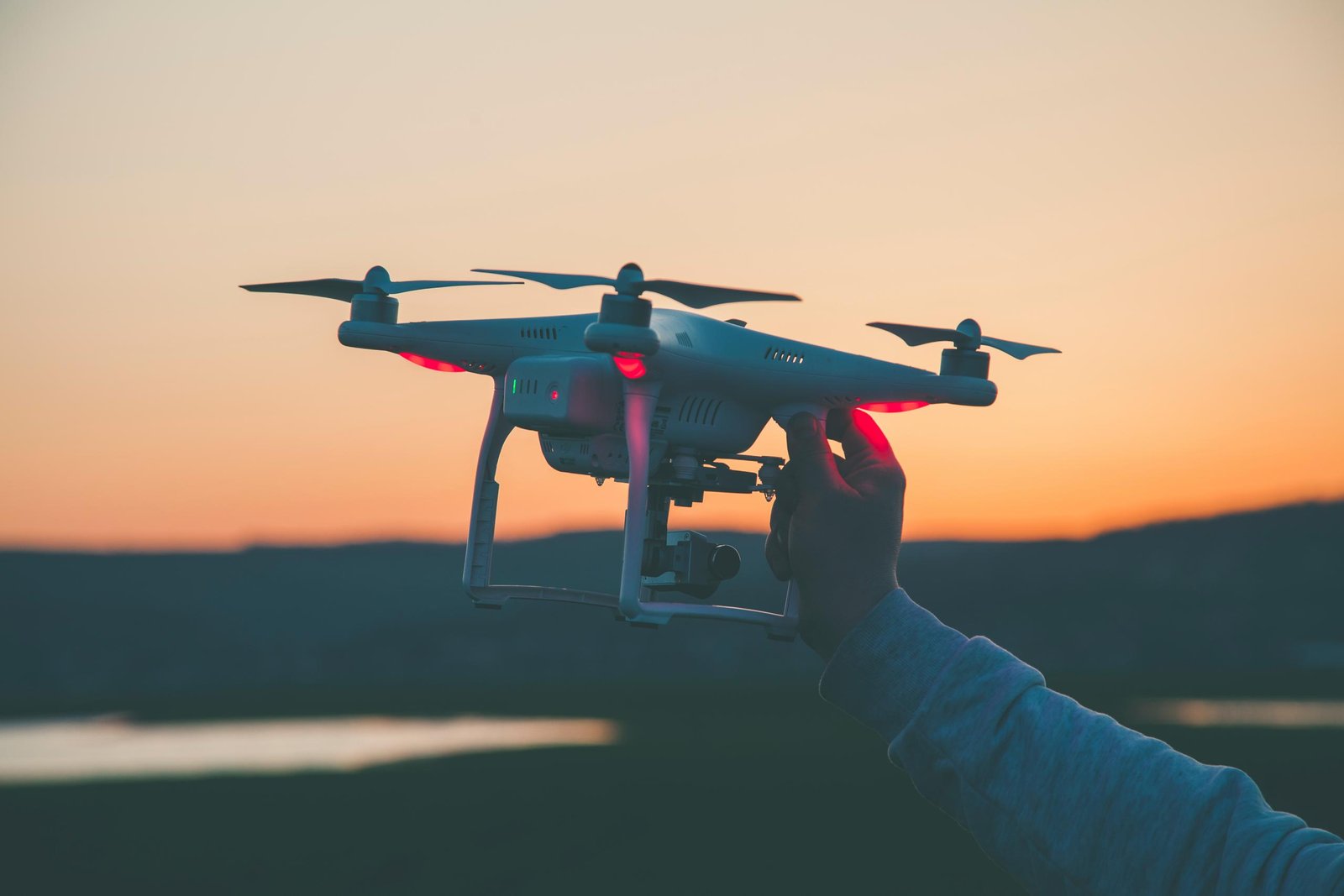Is Telecom Entering the Age of Flight?
7 MAY 2020
In this interview with Thomas Neubauer, TEOCO’s head of Innovation discusses the interesting opportunities for wireless service providers entering the drone or UAV (unmanned aerial vehicle) market.
Q. Why are some of the world’s largest telecom companies suddenly launching drone initiatives?
Historically, the aviation industry and the telecom industry have had nothing to do with each other. If you get on a plane you may hear the flight attendant say, “please turn off your phone.” This is the only interaction they really have with mobile networks. Now, with the influx of commercial drones and UAVs, recent regulations necessitate that those flying ‘beyond visual line of sight’ (BVLOS) will need to maintain remote identification, and this requires a reliable, SLA-backed cellular connection.
Q. Are there a lot of drones today that connect to the cellular network?
One of the key issues right now is that current regulations generally won’t allow drones to fly beyond visual line of sight, so no, there aren’t a lot right now. However, it is widely believed that this will soon change because of the social benefits drones can provide and that regulations will be eased once additional safety measures are put into place.
There is now an opportunity for CSPs to provide both critical data and cellular connectivity to support many of these safety issues. To get ready for these changes, cellular providers and others are asking- ‘what needs to be put into place to make this happen?’ This is where TEOCO is adding value. We are working with CSPs around the world to help them understand what their current networks are capable of today, and how they can connect to these other systems and automate a lot of the data sharing that is required to support these services.
Q. Will cell towers have to be re-tuned?
That’s a good question. Cellular networks were not designed to operate at an altitude of 400ft, and operators don’t want to risk making changes their current network – their cash cow – for potential future business. This is where we, at TEOCO, come into help CSPs understand the important implications. First, we help them to understand what they can achieve with their existing network today; without requiring any changes to how their networks are configured, we help them understand what BVLOS services can be provided, and at what level. Second, we help operators determine if any small changes can be made to their networks – perhaps add an antenna here or there – to enable more use cases. And lastly- we scope out any potentially harmful implications to their network. For instance, if you have a drone flying overhead transmitting high volumes of data, will this interfere with the ground network?
We can take this example further into the future with drone taxis. Today, we’re involved in projects exploring the use of drone taxis and assume that most passengers will want to take videos with their phones and stream it to their friends on the ground. So, we need to know the answer to questions such as, ‘How will transmitting HD video above cell towers impact cell interference?’ While this use case seems futuristic, we are already looking closely at this area and others, to better understand the challenges of data loads on the network caused by various drone applications. All these issues need to be ironed out ahead of time, and this is where we can help.
Q. Aside from the more futuristic use cases like drone taxis, what are some of the early drone services we can expect – once operators are given the green light?
The use cases that are really driving the industry right now are all about public safety, and the current coronavirus pandemic may certainly accelerate things. People may find it acceptable if a drone is flying over their backyard to save someone’s life, but if it’s delivering a pizza to my neighbor, maybe not so much.
Statistics show that U.S. fire departments respond to nearly three million false alarms every year. If you can send a drone before the firetrucks – you can determine whether this is a small or large incident and what resources are required. In the future, we believe drones will be sent to a remote location with a live data stream to view what is happening on the ground and assess what resources are needed to address each accident or fire.
Use cases around prescription delivery are also gaining momentum. CVS announced a deal with UPS to deliver prescriptions via drones, and Walgreens has a deal with FedEx.
Outdoor industrial inspections are another area of interest. These are currently being done with aircraft or helicopters at a steep price. Power lines, for instance, can be inspected with drones for a fraction of the price, helping to reduce the risk of fires in drought-stricken regions like California, and could define a whole new industry sector. Keep in mind, these drones will be embedded with cellular connectivity to support remote ID – as you won’t be able to fly BVLOS without it. Period.
Q. Why does 5G matter?
5G will support different network slices, each with their own SLAs. For example, command and control functions require super-low latency and high reliability. Support for remote ID requires low amounts of bandwidth, while video payloads will need a lot of bandwidth. Each of these applications will benefit from its own slice, with its own SLAs. So, in this example, there could be three different 5G network slices supporting one drone flight.
Q. It sounds like SLAs are an important piece of the puzzle that will push this forward. But does this mean it will only work with cellular connectivity?
Also, each BVLOS flight will need to be pre-approved depending on the airspace it is entering. You must have lawful intercept capabilities, where you can step in and control the drone mid-flight. You need guaranteed connectivity. It’s not clear yet at which altitude drones will be flying, but we’ve seen requests for 400 – 450 feet, and even a bit higher. All these requirements mean you need SLAs in place to assure certain performance levels are being met.
Network slices, SLAs and connectivity will all need to be monitored and assured on an ongoing basis. This enables CSPs to charge accordingly for this premium service. By supporting services like drones, CSPs will be able to sell SLAs as a new business model, and not just kilobytes per second. At TEOCO, one of our core businesses is service assurance and tracking SLA performance. With our technology, we’re showing service providers how to manage SLAs within 5G slices.
Q. What is AirborneRF and how does it help?
AirborneRF provides the connection between the telecom space and the aviation space. In simple terms, telecom operators are interested in providing critical connectivity information to the aviation systems, but they don’t want to share any additional information about their network or customers. The aviation side just wants to understand where it’s feasible for drones to maintain wireless connectivity. This is critical for safety purposes.
AirborneRF sits behind a firewall on the operator side. It processes data through an aviation stack of technologies that enable seamless integration with the aviation systems. When aviation authorities want a flight route approved, they can directly check to see if there are any connectivity issues.
For example, at Swisscom, AirborneRF connects their various data sources to the aviation systems, helping to define safe zones or flight corridors where there is enough connectivity for ensuring that remote ID is maintained, along with command and control and payload resources. For safety reasons, we can even identify what is on the ground. Is the flight path over a stadium full of people or a playground, or can it be diverted to safer spaces, like an open field, lake or forest? This is all valuable information for supporting flight safety. And it’s not like this is ‘one and done’ – each flight requires its own validation. Additionally, CSPs need to warn when there will be network maintenance issues or outages. This is important information to communicate to the aviation systems and our platform is that conduit.
We are also looking at the different wireless radio spectrums. With drones, service providers want to stay as low as possible in terms of spectrum, for the sake of reach, because lower spectrum goes farther and requires fewer handoffs. There will be some higher spectrum needed for larger payloads, especially at accident sites where they want to capture live video streams, but low band spectrum will be fine for a wide range of connectivity issues. These are some of the aspects we’re looking into right now for Telstra in Australia.
Q. Is cellular coverage adequate today to do things like industrial inspections, notwithstanding getting FAA permission?
Yes, but it depends on when and where. Urban networks can create a lot of interference. We look at various things, including: What is the topology of the network? What is the environment? How is your network set up? Which frequency bands are you using? What are the payload requirements for the particular use case? These all must be considered and, ideally, you want to be able to do this in an automated way.
We’re working as a facilitator so telecom providers can reach this market. If they can’t get their data to the aviation systems and assure the SLAs, it’s going to be a big challenge. By the time regulations are lifted in a few years, we also expect to see advances in slicing technology, so some of this will possibly even be retrofitted to 4G.
Thanks Thomas. This is a challenging and exciting time in our industry.
Yes, I agree. The major opportunities are still a few years out, but we’ve already seen a lot of movement in this space. It’s a new industry but we believe it’s here to stay because it solves a lot of real world problems. It’s important for service providers to prepare their networks, support systems and processes, and engage with eco-system partners and enterprise customers now – so they are ready once the regulators make BVLOS drone services possible.

Dr Thomas Neubauer was the founder and Managing Director of Symena, acquired by AIRCOM in April 2012. AIRCOM was subsequently acquired by TEOCO in December 2013. Thomas has more than eleven years of experience with automatic cell planning (ACP) and mathematical optimization. His experience has been applied to GSM, WCDMA, CDMA, WiMAX and LTE network design and operations. Thomas’ academic background is in smart antennas and MIMO systems.He holds a Ph.D. in telecommunications engineering from the Vienna University of Technology.


